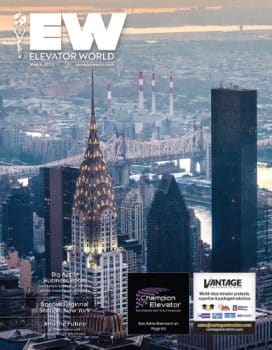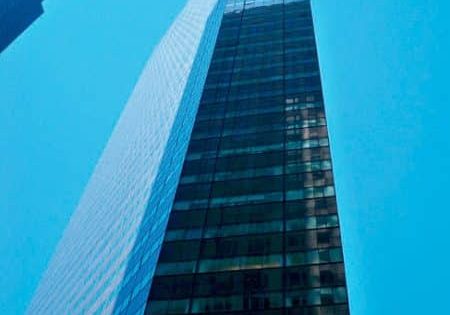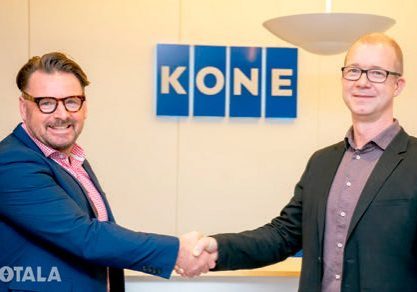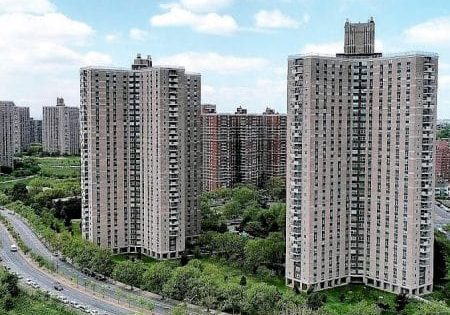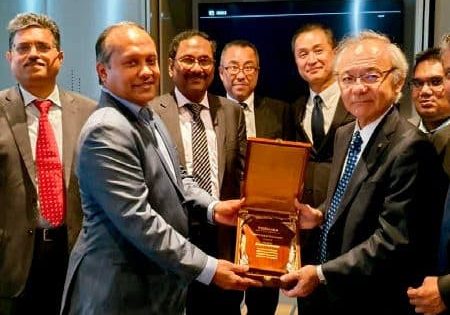Successful Implementation of a Mandated VT Periodic Inspection and Testing Program
Mar 1, 2020
Successful Implementation of a Mandated VT Periodic Inspection and Testing Program to Improve Safety and Reliability Emulating the NYC Model
by Robert Cuzzi and Harry Vyas
This article was first presented at the 2019 International Elevator & Escalator Symposium in Las Vegas. For more information on December 7-8, 2020’s event in Amsterdam and to participate, visit wwwelevatorsymposium.org.
The main purpose of inspection and testing is to provide objective, independent and impartial information regarding the condition of the elevator systems, and to identify components that are defective and need immediate attention and could have a negative effect on the building and its occupants. Existing conditions may present safety concerns, including damage or deterioration of elevator components, and operational problems due to these conditions.
Mandated safety inspections ensure all equipment is safe before use. A record of regular, properly conducted inspections provides liability protection. Failure to conduct regular inspections can result in safety issues, entrapments and outages, liability exposure and fines; all of this can impact businesses and negatively affect the economy.
NYC is a vertical city with more than 80,000 vertical transportation (VT) units, including 65,000 passenger elevators that complete about 35 million trips a day, transporting millions of people in a dense urban environment; a robust inspection and testing process is vital to enhance safety and reliability.
We will review the development, requirements and implementation of the mandated inspection and test requirements, in accordance with the NYC 2014 Building Code and General Administrative Provisions Article 304 — “Elevators and Conveyor Systems.”
The requirement of having an “unaffiliated/independent third-party inspection agency” to witness and document the testing procedures will be reviewed.
We will identify best practices for inspection and testing processes that enhance safety, transparency, integrity and quality of inspections, and promote a positive business environment with minimal inconvenience to building owners and tenants.
By the end of this article, readers will have learned:
- Development and implementation of the NYC inspection and testing process, based on ASME A17, Part 8.6, “Periodic Inspection and Testing”
- Best practices for inspection and testing of VT units to enhance public safety and service reliability
- Advantages of utilizing a third-party independent inspection (witness) agency versus maintenance company inspections or AHJ inspections (i.e. lack of proper and sufficient manpower and finances is a major issue for the AHJ inspection process, delaying completion of inspections and projects).
The methodology for inspections performed by an approved, licensed inspection agency and witnessed by an approved, licensed third-party inspection agency (not affiliated with each other) is as follows:
- Category One: One-Year Test (performed between January 1 and December 31 annually)
- Category Five: Five-Year Test (performed on an anniversary basis every 60 months)
- Affirmation of Correction (AOC) of Category 1 defects and violation items
- Fines or penalties issued for late or missed mandated inspections/tests, or failure to file AOC for deficiency items; established to encourage the building owner to perform inspections/tests in a timely manner to improve safety and reliability
Development and implementation of a comprehensive inspection/testing program with a third-party witness agency, coupled with a dedicated maintenance control program, bring the following benefits to the building owner, general riding public and elevator company:
- Enhanced safety
- Improved efficiency and service reliability
- Proper and efficient inspection/testing performed
- Reduced liability for building ownership
- Increase lifespan of equipment
- Avoid costly repairs and unexpected downtime
- Avoid violations and penalties
- Promote a positive business environment and economy
NYC Department of Buildings (DOB) statistics show that elevator accidents/incidents in NYC have been reduced by more than 60% since implementation of the current mandated inspection/test process, established with the 2008 code.
Due to limited AHJ resources and budgets, privatization of this process, by use of qualified third-party, independent and licensed “Witness Inspection Agencies,” has greatly improved the entire inspection/test process, resulting in the safest and most efficient VT systems possible.
Overview/Recent History of Mandated Inspections and Testing in NYC
The invention of the elevator makes urban living possible in our society, and without elevators and various forms of VT, cities as we know them could not exist.
NYC is a classic example of a vertical city, and we believe this city is only as good as its VT system. We have heard these statements many times over the years and for good reason:
- “VT is the safest mode of transportation in the world.”
- “VT is the lifeblood of any multifloor building.”
- “A modern city cannot function without a safe, reliable and efficient VT system.”
We live in an ever-changing, always growing and expanding world, where the population continues to increase daily. Most of our major cities are growing rapidly, and many cannot expand horizontally; so, they grow vertically, reaching up to amazing new heights, with taller and taller buildings appearing on the skyline almost overnight!
For many years, NYC has been referred to as the “Elevator Capital of the World” with not only an incredibly large number of VT units located in a relatively small area, but also with a tremendous variety of VT equipment, installed and maintained by more than 300 companies, large and small.
Vertical Transportation in NYC
- The city has 163 years of elevator history (since 1857).
- There are 84,653 VT devices under the NYC DOB jurisdiction.
- Five hundred average daily elevator trips are made per elevator.
- There are 35 million average daily citywide elevator trips.
- Twelve percent of all U.S. elevators are in NYC.
Based on the incredible number of VT units and more than 35 million trips per day, how does a large city properly manage its VT industry to ensure the maximum level of safety is provided to the riding public day in and day out during each VT trip? This is a serious challenge and must be accomplished through a variety of methods but, most of all, requires a high level of commitment from everyone involved, including:
- AHJ, in this case, the NYC DOB Elevator Division
- Owners/managers
- Elevator contractors and professionals – consultants and inspectors
- The riding public
In an attempt to accomplish this, and provide safe and reliable VT to the riding public, in 1981, the NYC DOB enacted Local Law (LL) 10/81, which required a total of five inspections to be performed on each elevator/escalator device under its jurisdiction over two years.
Two of these inspections, one each year, would be performed by a “private agency” duly licensed and registered by the NYC DOB and hired directly by the building owner/manager. The other three inspections (over a two-year period) would be performed directly by NYC DOB-employed “elevator inspectors,” controlled by the DOB’s Elevator Division.
Highlights of the LL 10/81 requirements:
- In effect from March 10, 1981, through December 31, 2008
- Routine (i.e. six-month type) inspections performed by the elevator contractor or private, licensed inspection agency, as hired directly by the building owner/manager
- Simple checklist-type filing form to be completed and submitted to the NYC DOB by the performing inspection company
- No third-party verification required; the building’s maintenance contractor typically performed this inspection on the equipment it was maintaining.
- Requirement for a “Two-Year No Load” (i.e., periodic test) and a “Five-Year Full Load” (Category 5 test) to be performed but not witnessed by a third party; in most cases, the elevator contractor maintaining the equipment performed these tests and “self-certified” the results by submitting filing forms to the NYC DOB.
- Result: Inspections and tests were not being performed properly, as required by code, due to lack of oversight and lack of properly trained, sufficient staff.
- Integrity of the inspection and test process is in serious doubt!
- Were these tests actually being performed?
- If so, were they being performed properly, in accordance with code?
- No checks and balances in place to verify this.
The NYC DOB realized the existing system and testing requirements were not being properly administered and managed, and it lacked personnel to not only provide oversight of the annual LL 10/81 inspections being performed by the private sector, but it could not perform the other required inspections as required by its own local law.
The bottom line is that the present system was not working, and safety was being compromised.
Implementing a New Mandated Inspection and Testing System
- Challenge: How to fix a “broken” system to maximize elevator safety; a major code change means “A Big Challenge for the Big Apple.”
- The NYC DOB (AHJ) and code review committee recognized we are dealing with a dense urban population and the world’s most complex high-rise elevator market. This requires robust VT equipment regulation to provide a safe, reliable, comfortable and sustainable VT system to the riding public.
- Volunteer Elevator Code Review Committee
The NYC Elevator Code Review Committee comprises volunteers from throughout the NYC elevator and real estate industries, Fire Department of NY (FDNY) and NYC DOB. Formed in 2005, this committee meets 10 times per year to review the various elevator codes and make recommendations for improvement. The committee reviews each section of the codes
and standards, and makes appropriate recommendations to enhance safety, reliability and service for the riding public. The committee uses a “consensus-based” process to arrive at recommendations pertaining to improving the code standards. The volunteer committee currently has a total of 29 members, including alternate members, technical experts and advisors, with the following entities represented:
- Complete overhaul of old inspection and testing system necessary to improve integrity, transparency and quality of inspections
- Addition of the “Witness Inspection Agency” to the inspection process not only adds another set of eyes, but greatly improves the quality of inspections, integrity and transparency of the entire inspection process.
- Privatization of the mandated testing system, with a certain percentage of inspections to be audited by the NYC DOB Elevator Inspection Division, provided another layer of oversight to ensure conformity of the inspections performed, as required by the code.
- The “Routine” (six-month) inspections are to be replaced by annual, mandated periodic inspections and tests (Category One-, Three- and Five-Year inspections and tests). Category 1 Inspection (Cat-1) is a one-year test performed between January 1 and December 31 each year as a no-load safety test. Category 3 Inspection (Cat-3) is a three-year test performed only on water hydraulic elevators every three years from the date of installation. Category 5 Inspection (Cat-5) is a five-year test performed every five years from the date of installation (performed with rated load and at rated speed).
- Third-party witnessing required for all mandated Category 1, 3 and 5 tests.
- NYC DOB-employed in-house inspectors to verify and spot check inspections and tests performed by a licensed inspection agency on behalf of the owner.
- NYC DOB contracted separately with “PVT” (private, licensed inspection) agencies to perform one inspection per device per calendar year.
- At present, NYC DOB hires two licensed inspection agencies to perform these annual inspections (visual inspection – no testing needed).
Creating a Partnership Among Building Owners, Performing Inspectors, Third-Party Witnessing Inspectors and Local AHJ (NYC DOB)
Successful modification and implementation of a complete new mandated inspection and testing system, especially for a tremendous VT market such as NYC, requires a serious commitment and an extremely high level of cooperation among various parties, including building owners/managers, performing and witness inspectors and the local AHJ — in this case, the NYC DOB.
Only by working together, with each entity having its specific roles and responsibilities, could a new mandated testing system be achieved for the good of the riding public. Each party would comply with requirements, as follows:
- Building owners and managers responsible for complying with the mandated inspection and test requirements
- VT contractors responsible for performing the mandated tests in accordance with NYC code requirements, as contracted by the building owner/manager
- Independent, third-party “inspection agencies” responsible for witnessing all inspections and tests to ensure compliance with the NYC elevator code and mandated testing requirements
- Owners/managers/VT contractors/third-party witnessing agencies “team up” to ensure all requirements are complied with and mandated testing is completed in a timely manner.
- Any necessary deficiency items to be corrected by the responsible party in a timely manner to ensure safety and avoid fines/penalties
- Inspections performed on time without any backlog (Due to lack of manpower and/or limited budgets, many AHJs have inspection backlog delays that may compromise safety and reliability.)
- Reduction of an AHJ’s inspection burden can ultimately save taxpayer dollars.
Current NYC Requirements for Mandated Inspections and Tests
As part of the new mandated inspection and test process, the NYC DOB created new, or modified existing, rules and regulations to ensure the new inspection and test procedures would be adhered to and proper filing of inspection and test forms would take place. While there were several important documents in this process, the main ones that established the requirements and procedures to be adhered to are as follows:
- NYC Article 304 — “Periodic Inspection of Elevators and Conveying Systems”: A complete copy of Article 304 appears in this month’s Online Extras at www.elevatorworld.com. As stated in the first paragraph, “Every new and existing elevator or conveying system shall be inspected and tested in accordance with the schedule set forth in this article.” As detailed, all systems are to be maintained in a safe condition and in accordance with ASME A17.1 as modified by Appendix K of the NYC Building Code.
- Articles 421 and 422 — “Licensing of Private Elevator Inspection Agency Directors” and “Inspectors — Mandated by NYC Law”: These articles require that only the licensed private inspection agencies may perform and/or witness inspections and tests or enter into contracts pursuant to Article 304.
- The required filing forms (# elv-3) to be completed and submitted for all Category 1, 3 and 5 tests, along with associated filing fees paid to the NYC DOB
- The required AOC filing forms (# elv-29) to be completed and submitted for all required corrections/repairs (“unsatisfactory” items) found during the inspection/test
- Recently implemented NYC “DOB NOW” computer system designed and implemented to facilitate all inspection/ testing requirements and manage timely filings, deadlines, fees and/or penalties. Highlights include all filing forms to be submitted electronically (no paper filings permitted); owners, agency directors and inspectors need an “e-filing account” required to submit all filings and pay applicable fees; all forms are electronically signed by all parties online; once electronic payment is made, the filing process is complete; and current status of inspections/tests and filings are listed in DOB NOW.
Management and Enforcement for Over 84,000 VT Units – How Is It Accomplished?
There are many components and factors required to properly manage and enforce inspection and testing requirements for more than 84,000 VT units. Following is a brief summary of them:
- Development of codes and standards applicable to mandated inspections and testing to establish minimum safety requirements for all new and existing VT systems, in accordance with ASME A17.1 and NYC DOB Appendix K and Article 304 – “Periodic Inspection of Elevators and Conveying Systems”
- Application and registration process; Articles 421 and 422– “Private Elevator Inspection Agency Director & Inspector Licenses”; detailed recordkeeping of inspections, testing, tracking violations and defects; and data used to perform risk analysis and identify locations with conveyance numbers for future inspection and testing
- Commissioning inspection and acceptance testing for new installations and alterations: NYC DOB to continue to witness these tests with its own inspectors (the performing inspector is to file necessary forms with the NYC DOB) and to confirm device installed or altered complies with codes and standards.
- Training of performing inspectors and witnessing inspectors to improve inspection quality and provide consistency in the inspection process
- Quality assurance to improve integrity and transparency of the inspection and test process.
- Enforcement to achieve full inspection/testing status (along with code compliance) and enhanced safety and reliability of the service for the riding public
- Maintenance requirements, which include a maintenance control program, maintenance and repair log. Benefits are increased lifespan of equipment, enhanced efficiency of equipment, avoiding unforeseen costly downtime and repairs, and a reduced number of shutdowns and entrapments.
Results of a Properly Administered Mandated Inspection and Testing System
- Enhanced safety/reduced number of accidents and incidents, shutdowns and entrapments
- Improved efficiency and service reliability measured through complaint data received and analyzed
- Proper and efficient inspection/testing performed
- Reduced liability for building ownership
- Increased overall lifespan of VT equipment
- Minimized costly repairs and unexpected downtime
- Avoid violations and penalties
- Promote a positive business environment and economy
- Improve transparency, integrity and quality of inspection process
- Enhanced rider trust in the inspection process and confidence using VT equipment
- Eliminated inspection backlog and all inspections/testing performed in a timely manner
- Reduced AHJ inspection burden without sacrificing public safety; save taxpayer’s dollars.
| AFFILIATION/REPRESENTATION |
| NYC Volunteer Elevator Code Review Committee |
| NEII – National Elevator Industry, Inc. |
| NYCHA – NYC Housing Authority |
| REBNY – Real Estate Board of New York |
| ECNY – Elevator Conference of New York |
| Port Authority of New York and New Jersey |
| EMANY – Elevator Manufacturers Association of New York |
| FDNY – NYC Fire Department |
| ASME – Code Committee Member |
| BOMA – Building Owners and Managers Association of New York |
| Union Local 1 and 3 |
| NYC DOB |
| NAEC – National Association of Elevator Contractors |
| DCAS – Department of Citywide Administrative Services |
Get more of Elevator World. Sign up for our free e-newsletter.

